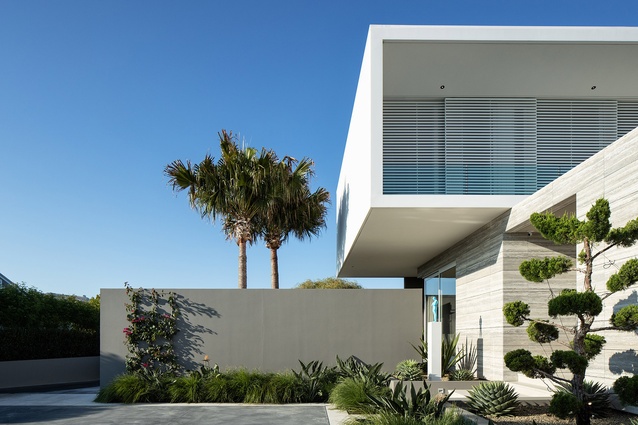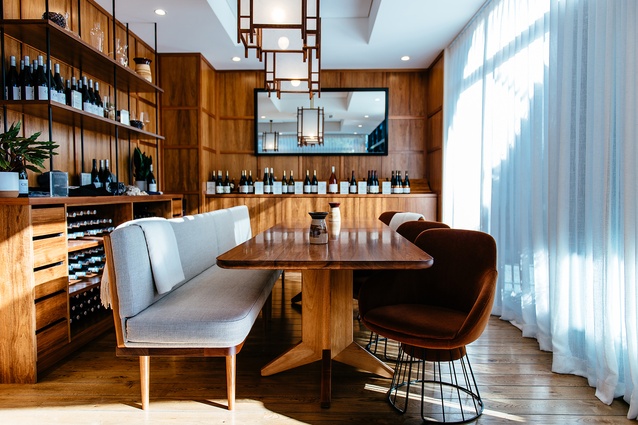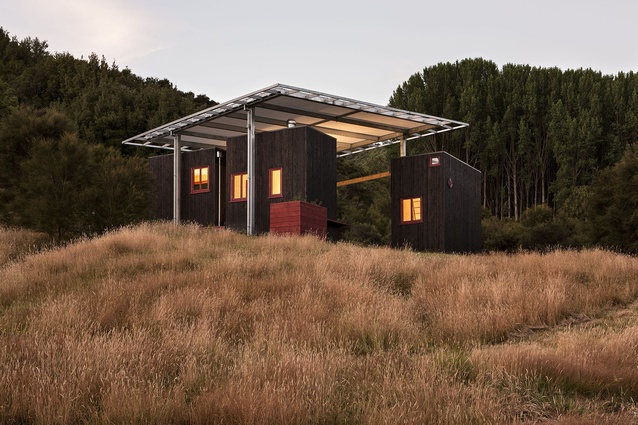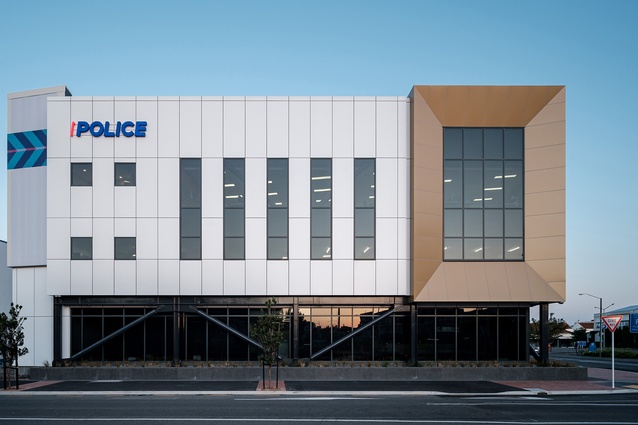Winners revealed: 2020 Gisborne/Hawkes Bay Architecture Awards
The winners of the 2020 Gisborne/Hawkes Bay Architecture Awards, run by Te Kāhui Whaihanga New Zealand Institute of Architects (NZIA), were announced online via a live-streaming event on 1 July. The jury – led by Havelock North architect Renee Woods, who was joined by architects Yvonne Forrest and Ezra Kelly from Napier, and Gary Lawson from Auckland – named 11 winners in six categories including a wine lounge, a police station and public toilets.
“A mix of local and out-of-town architecture practices provided a rich variety of projects,” Woods noted. “In many of the award-winning projects, there was a nod to craft, culture and regional architectural traditions.”
She continued, “Small, community and residential projects more than held their own, which bodes well for the immediate economic future.”
See the full list of winners with jury citations below.
Housing
Turley House by Gavin Cooper Architect

The work of Guy Natusch and John Scott was a starting point for this thoughtfully designed home, which is the product of years of dreaming and planning by its owners. Another influence is biophilic design principles. Built to ensure the wellness of its inhabitants for years to come, the dual-wing house facilitates generous connections to its surrounding environment; it was constructed using non-toxic building materials and a variety of sustainable strategies to ensure it sits lightly on the land. Its honesty, directness and considered scale gives the Turley House a quiet presence and humble elegance appropriate to those who inspired it, and a credit to those who conceived, designed and built it.
Cantilever House by Sumich Chaplin Architects
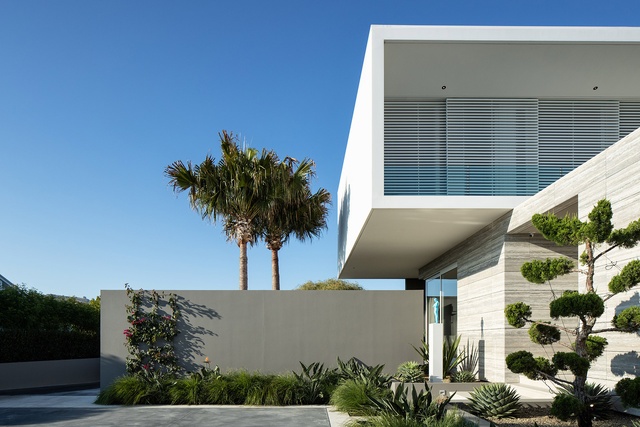
The dramatic cantilevered forms and stacked volumes of this home draw a direct line from the glamour of mid-century California to modern-day Havelock North. Precisely detailed and impeccably constructed, the large family residence is comprised of building block forms that create a series of family-focused spaces around a sunny, protected courtyard. The house enjoys panoramic views but is also screened from the neighbouring properties. A house this big and bold risks feeling heavy, but a close relationship with sun, air, water and sky gives it surprising levity.
Parkhill Farm by Townsend Architects
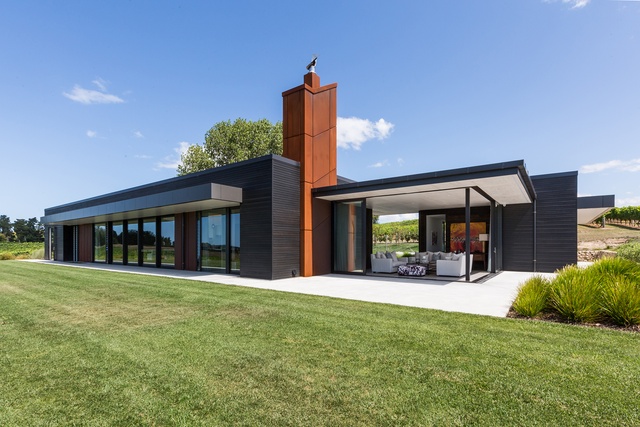
A seemingly serene, simple structure belies the depth of detailing in this house. Strong horizontal forms anchor the house in its landscape, and the taut, jet-black exterior gives way to a richly textured and calm interior. A narrow plan allows abundant views and promotes cooling airflow; thermal comfort is also provided by generous eaves that offer protection against the Hawke’s Bay sun. A glazed corner living space delightfully blurs the boundaries between interior room and outdoor veranda and successfully turns the building through 90 degrees.
Commercial
66 Reads Quay by Architects 44
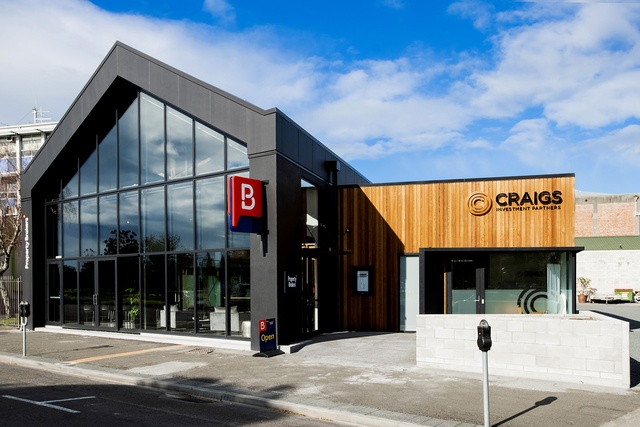
This building serves a commercial and wider civic purpose as it imparts some identity to a part of the city that has been overlooked. The building connects to the Taruheru River and animates the immediate streetscape with its strong gable form, glazed façade and large doors that open onto the footpath. Innovative structural strengthening has been integrated cleverly with the original building in a manner that preserves a sense of the building’s history and contrasting yet complementary external cladding materials distinguish the building’s two separate tenancies.
Joll Road by RTA Studio
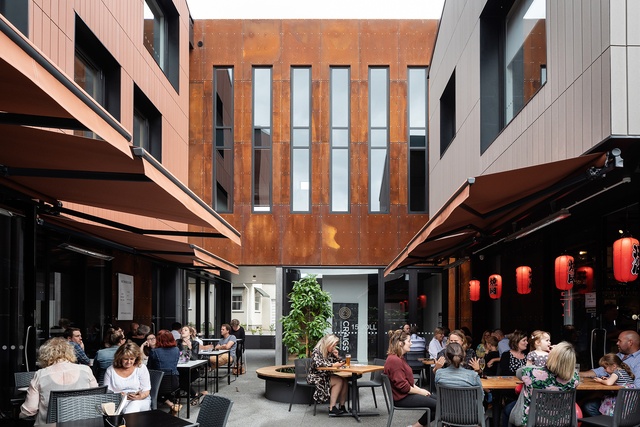
In this considered exercise in contextual design, a mixed-use development has been integrated successfully into Havelock North Village. The project enhances the local streetscape and anticipates, through the inclusion of a lively laneway, future development in the neighbourhood. Clean, crisp forms, complemented by subtle variations in colour, offer contemporary appeal while alluding to the vernacular architecture of the surrounding rural district. Architect and client are to be congratulated on achieving a quality result in a commercially driven project.

Hospitality
Wine Lounge by C Nott Architects
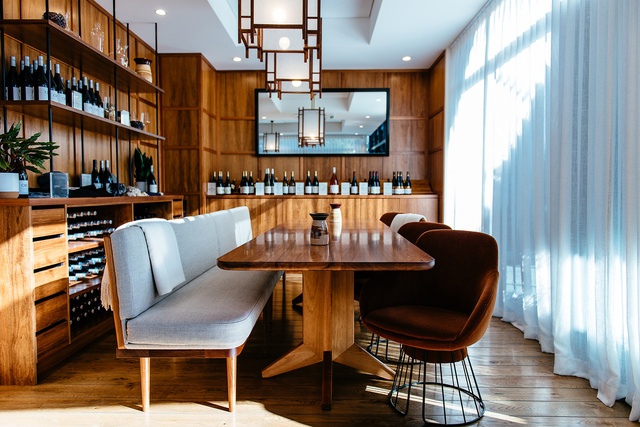
This carefully thought-through installation has successfully revitalised and transformed an existing tenancy to create a meeting room for wine lovers. Sophisticated junctions between the dual functions of tasting room and social space allow fluid circulation as well as a sense of intimacy and community cohesion. Rich panelling, handmade lighting and sheer drapery speak to the romance associated with Old World wines, while Southern Hemisphere materials, earthy surface treatments and contemporary joinery celebrate the region’s newly forged wine-making pedigree. Impeccable detailing and a clever fitout ensure wine is always in the spotlight and the people who love it always feel at home.
Craggy Range River Lodges by Clarkson Architects

Designed to offer guests the chance to experience the extraordinary landscapes at Craggy Range, these lodges are examplars of careful planning, beautiful detailing and impeccable space-making. Versatile glazing creates a permeable envelope and frames the views to be found on all sides, while finely calibrated outdoor spaces provide the right amount of shelter from the Hawke’s Bay sunshine. With an architectural aesthetic that is sensitive both to established buildings on the site and to the landscape itself, these lodges are distinctly ingrained in their context.
Heritage
Hawke’s Bay Opera House by Dave Pearson Architects

In this inspiring project, a skilled architect working with committed clients has restored an historic building and strengthened the spirit of a community. Interventions have been seamlessly integrated, when necessary, and rightfully celebrated when the opportunity arose. The judicious balance of boldness and delicacy has produced a splendid atmosphere that engenders a sense of occasion and provides an outstanding venue for live performance. The revived Hawke’s Bay Opera House demonstrates that important heritage buildings can be saved and can have a purposeful new life.
Resene Colour Award winner
Sensitive colour selection was vital to the restoration of a building with a long history of repairs, interventions and touch-ups. Formerly dark interiors have been rejuvenated with a lighter palette, and rich reds and gold highlights add theatrical glamour.
Public Architecture
Longbush Ecosanctuary Welcome Shelter by Pac Studio
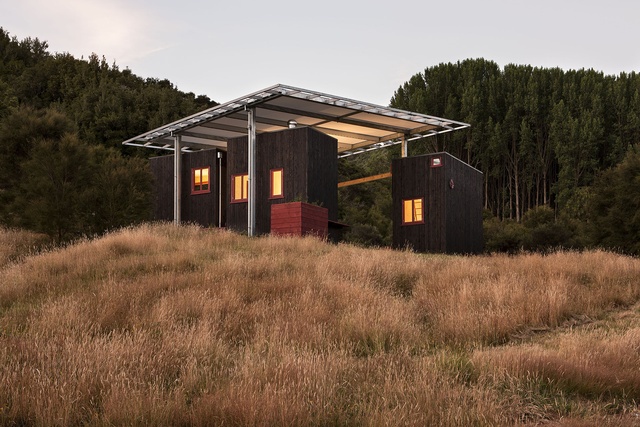
Clustered forms loosely arranged beneath a large canopy offer a casual and engaging shelter that provides respite, education and, most importantly, delight. There is a special level of ingenuity at work in this environmental education space: carefully positioned modules enable well-considered viewshafts; a ladder gives access to a rooftop platform with viewing windows; and fold-down walls and bird-nest niches elevate the shelter above the status of an abstract architectural response. The manifestation of PhD research as built form has resulted in a legacy that the architects, owners and the region can be immensely proud of. The jury commends the architect’s passionate personal commitment and dedication to a project full of heart and soul.
Hastings Police Station by GHDWoodhead creativespaces
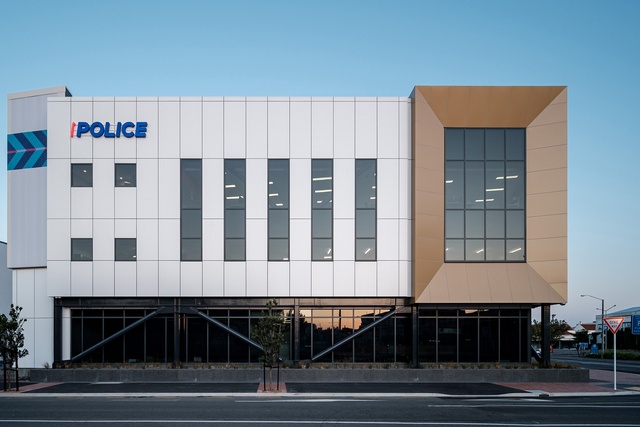
This complex project demonstrates how careful planning, good access to natural light, consideration of acoustics, and built-in flexibility can enhance a workplace and improve social outcomes. Internal planning was carefully considered and benefitted from consultation between client and architect, and this process has been the catalyst for a desired cultural shift within the client organisation. Both figuratively and literally, the building illuminates the work done by Hastings police. An atrium disperses natural light throughout the building and provides connection between the public counter and circulation spaces within the station. Street-level glazing allows visual permeability and demystifies the inner workings of the police station.
Small Project Architecture
Cornwall Park Toilets by Citrus Studio Architecture
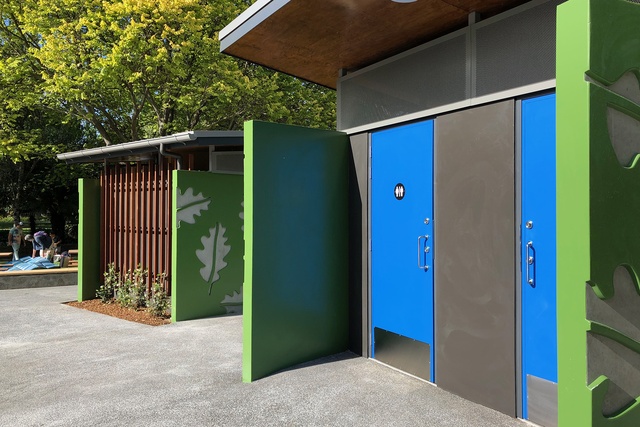
This playful project brings a sense of quality to public amenity and demonstrates that public toilets need not be hidden away. A thoughtful and deliberate design response has resulted in a structure that communicates care and respect for its community, while also engaging in a little light-hearted fun. A delightful addition to a popular park, these facilities are a case study in the use of good design to elevate the activities of everyday life.
Resene Colour Award winner
Bold colours and warm timbers integrate with precast concrete walls to create a functional facility inspired by its location. The walls are animated not only by colour but also by the play of light and shadow over the design, bringing the decorative leaf treatment to life. Colour imbues this project with a sense of fun that elevates it beyond a prosaic brief.
The NZIA Local Awards programme has been supported by Resene for the last 30 years.

